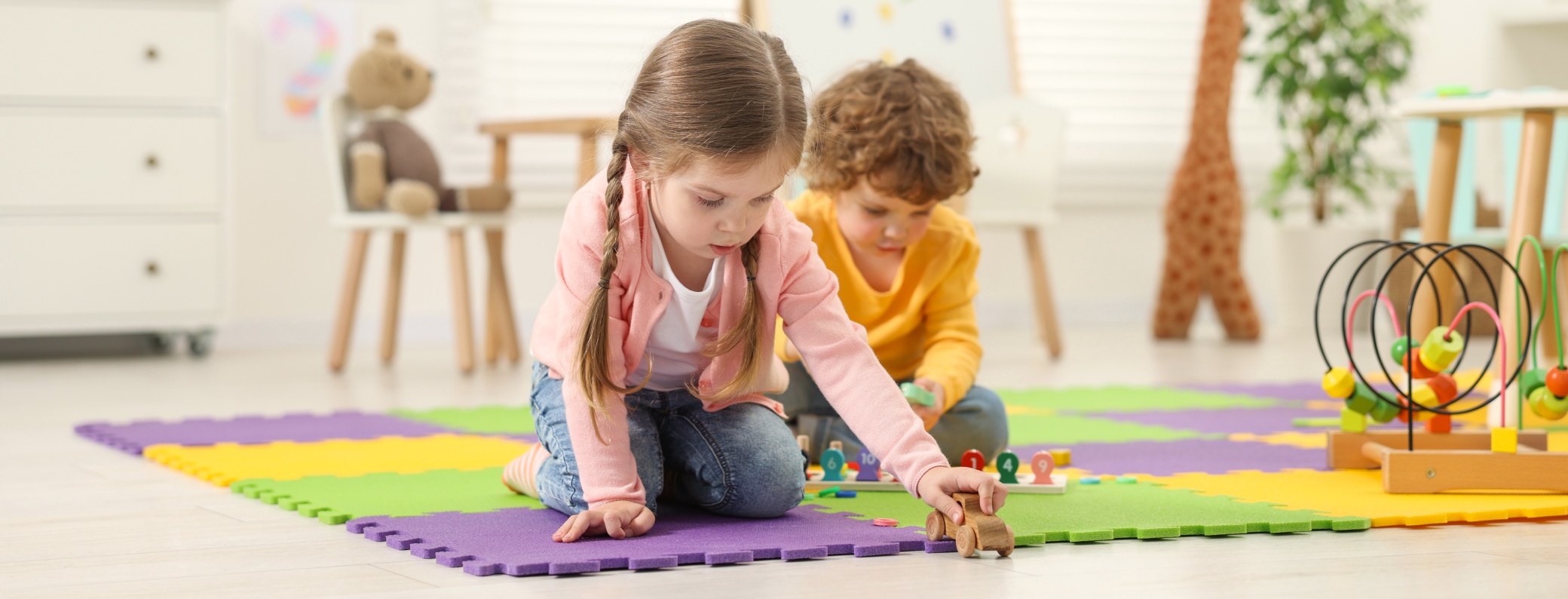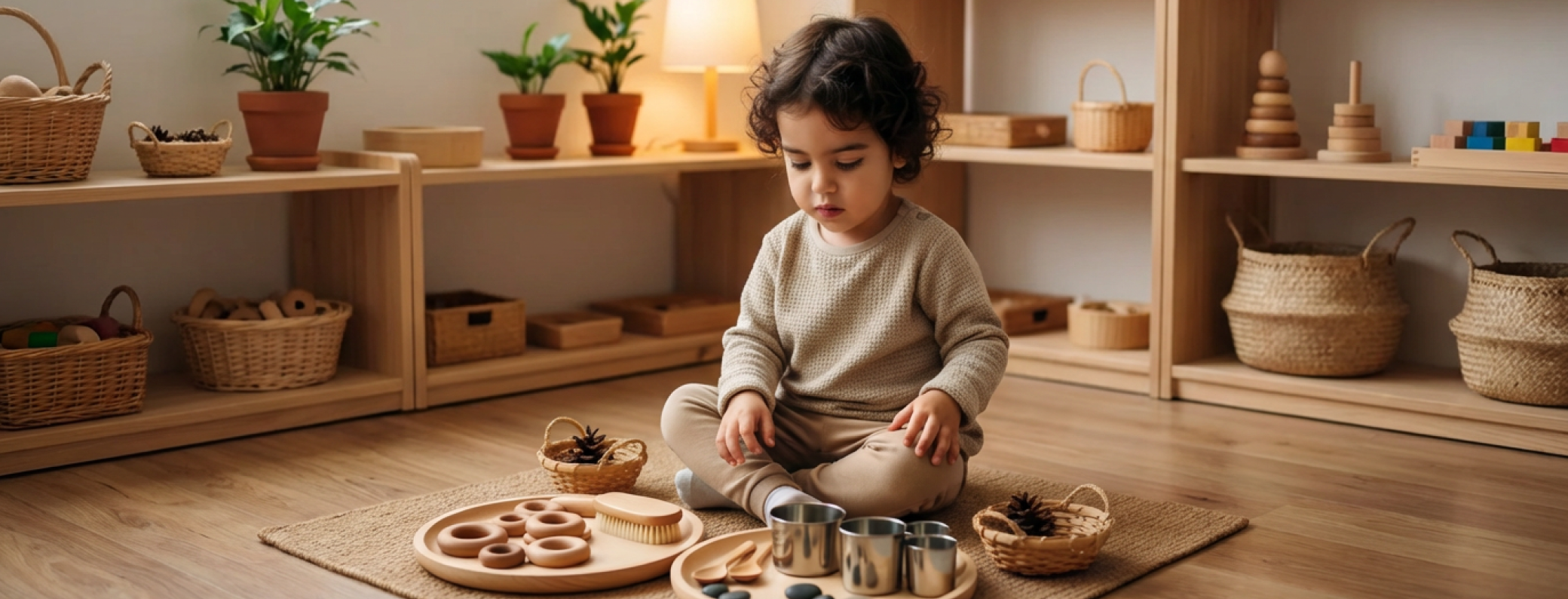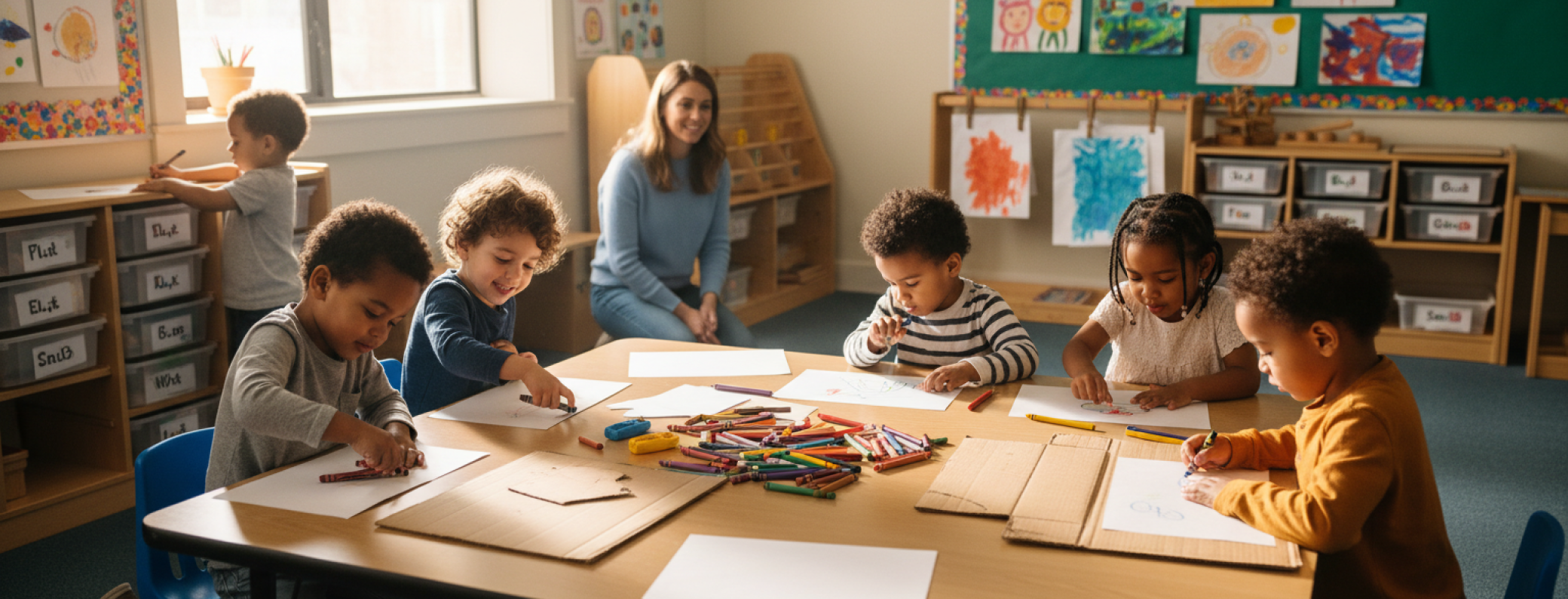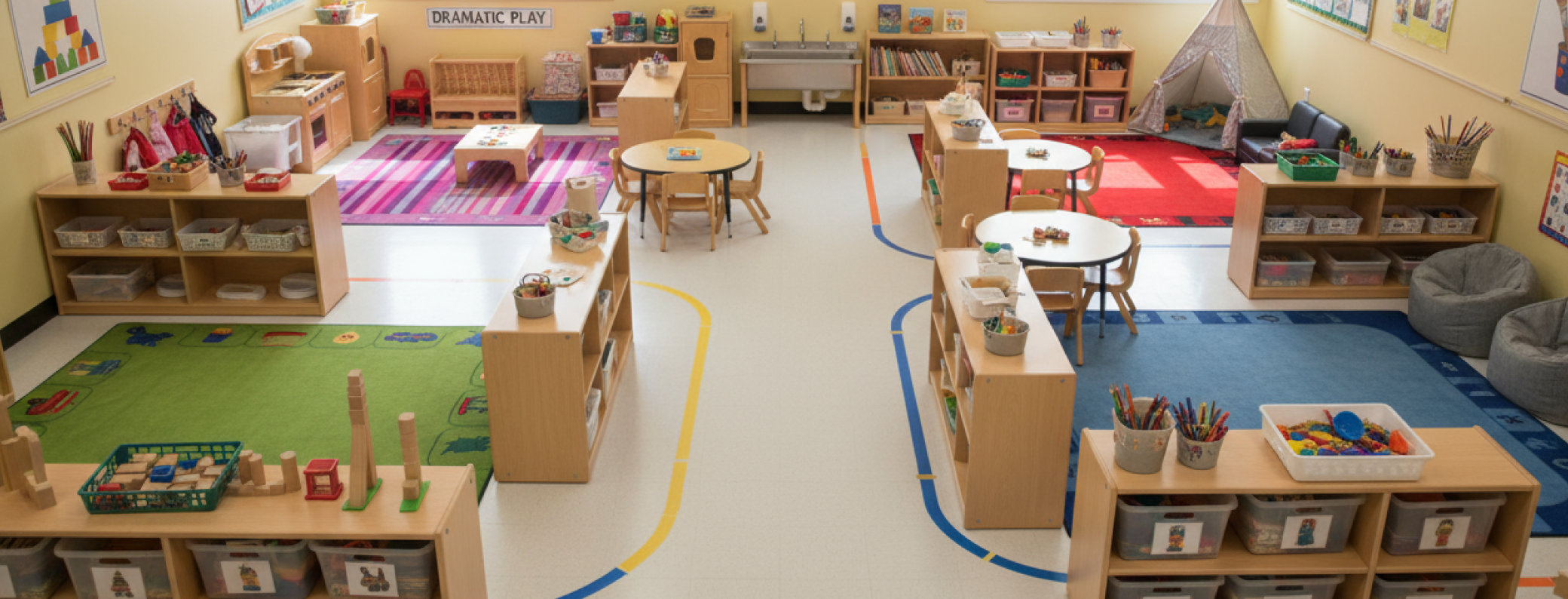When children begin to play, they don’t always jump straight into sharing or taking turns. In fact, one of the first stages of social development is when children play side by side, engaged in their own activities but clearly aware of one another. This is known as parallel play.
During this stage, children may use similar toys, mimic each other’s actions, or simply enjoy being near a peer without directly interacting. While it might seem like they’re playing alone, parallel play plays a big role in helping children build the social and emotional skills they’ll use in future relationships.
In this article, we’ll take a closer look at what parallel play is, why it matters, and how both educators and families can support it, at school and at home.
What is parallel play?
Parallel play is a developmental stage where children play near each other, often using similar toys or engaging in the same kind of activity, but without interacting directly. You’ll often see it between ages 18 months and 3 years, although older children may revisit this type of play depending on their environment and personality.
Imagine two toddlers sitting on the floor with building blocks. One is stacking, the other is sorting. They’re not working together, but they’re aware of each other, occasionally glancing sideways, copying movements, or reaching for a toy the other is using. That silent social awareness is exactly what parallel play is all about.
Why parallel play matters
Even though the children aren’t interacting directly, parallel play is deeply social. It’s the first time they begin to notice others in their space and start learning what it feels like to be part of a group. They begin to observe, imitate, and understand social boundaries, without the pressure of direct cooperation.
Here’s what children are learning during parallel play:
- Awareness of others: They begin to sense how others use space, toys, and voice.
- Imitation and modeling: Watching a peer stack blocks may spark the same action.
- Emotional regulation: Being near others without conflict teaches patience, turn-taking, and tolerance.
- Language development: Even if not speaking to each other, they hear vocabulary, tone, and conversation from adults and peers.
- Confidence: Parallel play lets children engage socially while staying in control of their own activity.
Parallel play in early childhood classrooms
In early years settings, parallel play often happens naturally during free play or choice time. You might find two or three children in the same area, for example: a sensory table or a pretend kitchen, each engaged in their own task but clearly aware of each other’s presence.
Some examples include:
- Two toddlers drawing side by side with crayons, occasionally glancing at each other’s pictures.
- A child playing with cars while another lines up animals beside them.
- Children in a mud kitchen “cooking” their own meals while mimicking each other’s actions.
As educators we often witness subtle interactions like: mirroring, reaching for the same object, or smiling at a peer without saying a word. These moments might seem small, but they are powerful signs of emerging social understanding.
Supporting parallel play as an educator
In early years classrooms, parallel play is a signal that children are preparing for deeper relationships. Here’s how educators can support this stage:
- Set up side-by-side opportunities: Create cozy nooks, small tables, and activity zones where children can play near each other without needing to compete for space.
- Provide multiples of the same materials: This reduces conflict and encourages parallel exploration.
- Model gentle social language: Even if children aren’t speaking to each other, hearing phrases like “I see you’re using the blue crayon” helps build social vocabulary.
- Narrate what you see: Quietly describing what each child is doing validates their play and helps bridge awareness: “You’re both painting with yellow today!”
- Avoid forcing interaction: The goal isn’t to make children share or talk. It’s to let them build comfort and connection at their own pace.
Supporting parallel play at home
Parallel play isn’t limited to the classroom. At home, especially with siblings or during playdates, you’ll see the same patterns. Here are a few ways parents can encourage it:
- Offer open-ended activities like blocks, water play, or drawing supplies.
- Let children play side by side even if they don’t engage, this still counts as social time.
- Keep expectations low, don’t worry if they’re not talking or sharing yet.
- Celebrate small moments of awareness like a glance, a giggle, a moment of imitation.
- Use the Parent App to stay connected with your child's development, see how they play with others at school, and get inspired by what’s working in the classroom.
How Parent App supports this developmental stage
In early childhood, not every milestone comes with a big announcement. Sometimes it’s a quiet shift, a child who once played alone now choosing to sit next to a peer. A moment of imitation. A brief giggle shared.
Parent App helps educators and families notice and celebrate these moments. With easy documentation, teachers can capture the subtleties of social growth. Families get real-time updates, photos, and reflections that highlight social-emotional learning as it unfolds.
This means parents can continue supporting parallel play at home, using the same language and cues their children are experiencing at school, building continuity, trust, and deeper developmental understanding.
Final thoughts
Parallel play is often underestimated because it looks quiet. But in that quiet, so much is happening. Children are watching, learning, and slowly opening the door to friendship.
It’s a stage that doesn’t need to be rushed. With patience, the right environment, and the support of caring adults, children will move from side-by-side play to more connected, cooperative interactions in their own time.
Through observation, gentle encouragement, and tools like Parent App, we can help shine a light on the quiet power of parallel play and give it the value it deserves in the early years.
Interested in Joining the Parent Community?
Parent is a simple, powerful tool that helps early education centers stay connected, organized, and focused on what matters most: the children. From daily communication and attendance to billing and staff management, everything you need is in one place. Parent makes it easy for teams to work together and for families to feel involved and supported. Trusted by centers across the globe, Parent is built to empower educators.
Let’s talk — book a quick, no obligation, walkthrough with our team
If you found this post helpful, explore our free webinars, activity library, and newsletter for more support in your early years journey.
Billing, Invoicing Automation & Smart Finances
Communication & Engagement
Child Development & Progress
Waitlist, Forms & Attendance
Effortless Team Management
Daily Updates That Matter
Templates & Printables
Blogs
Webinars
Case Studies & Testimonials
FAQs
Help Center




